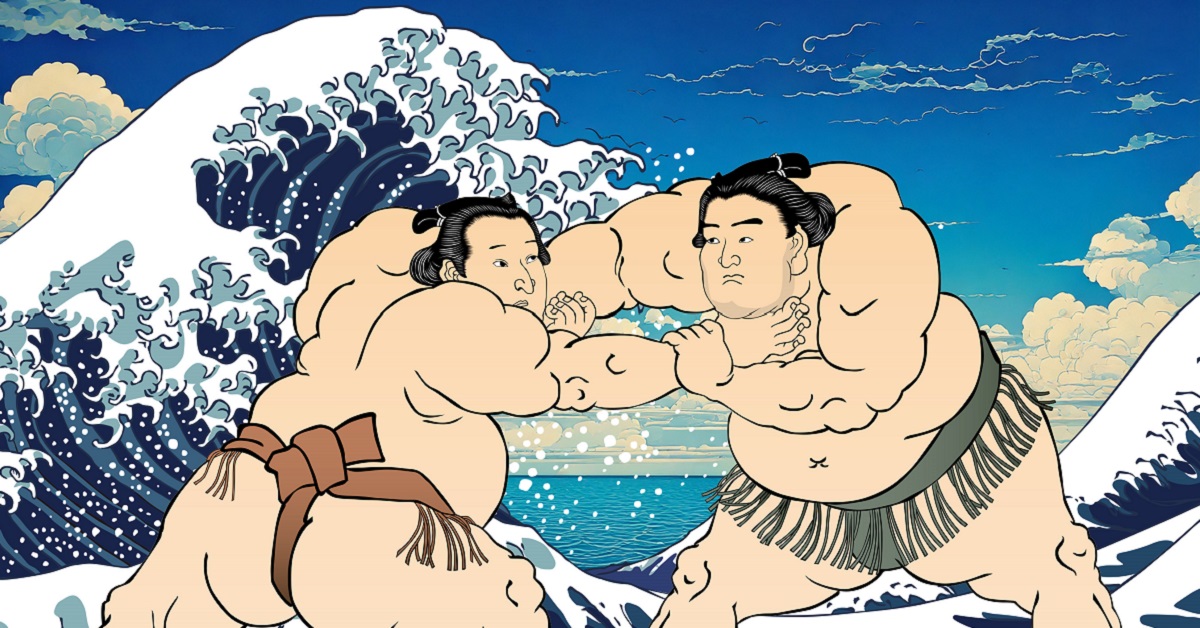This final match of the day, known as the Musubi no Ichiban, showcases the most prestigious and anticipated bout in a Grand Sumo tournament.
It is not merely a conclusion—it represents the pinnacle of skill, dignity, and cultural tradition.
What Is the “Musubi no Ichiban”?
The Musubi no Ichiban is the final and most prestigious match of the day in sumo, where top-ranked wrestlers face off. Usually, it involves Yokozuna or Ozeki, the highest-ranked rikishi. It is not only the final match in order but also the one with the greatest symbolic weight, embodying Japan’s cultural emphasis on meaningful conclusions.
Here’s a breakdown of the key terms:
| Term | Meaning |
|---|---|
| Musubi no Ichiban | The final match of the day |
| Yokozuna | Highest rank in sumo, expected to be undefeated |
| Ozeki | Second-highest rank, known for consistent strength |
| Honbasho | Official sumo tournaments held six times a year |
The Musubi no Ichiban represents the cultural value of “ending with dignity”, a key theme in Japanese tradition.
The Unique Significance of the Musubi no Ichiban
The word “musubi” symbolizes conclusion or closure in Japanese, and this spirit permeates sumo as well. The Musubi no Ichiban is viewed not merely as a competitive match but as the culmination of a day filled with ritual, skill, and discipline.
Every movement—from the pre-bout rituals like salt throwing to the intense standoff at the tachiai—is executed with care and intention. The crowd holds its breath, deeply immersed in the moment.
| Element | Spectator Highlights |
|---|---|
| Shikiri | Calm, deliberate pre-bout pacing and focus |
| Salt Throwing | Symbolic purification of the ring |
| Tachiai | Instantaneous clash of power and timing |
| Post-bout Etiquette | Humble gestures, bowing, leaving the ring with respect |
This final bout encapsulates the sacred and ceremonial essence of sumo, transforming it from a sport into a deeply rooted cultural performance.
Relationship Between Musubi no Ichiban and the Yumitori-shiki
After the Musubi no Ichiban concludes, the Yumitori-shiki, or bow-twirling ceremony, is held. This tradition involves a junior wrestler performing a dance-like ritual using a bow to purify the ring and give thanks to the gods.
| Element | Description |
|---|---|
| Purpose | Purification of the ring, expression of gratitude |
| Performer | Usually a junior wrestler of the Juryo division |
| Movement Style | Graceful gestures symbolizing spiritual calm |
This ritual creates a peaceful and solemn ending to an emotionally charged day, reinforcing sumo’s unique identity as a blend of competition and ceremony.
Key Highlights for Beginners and Foreign Spectators
Even for those unfamiliar with sumo, the Musubi no Ichiban offers captivating and accessible highlights:
| Viewing Tips | What to Observe |
|---|---|
| Where to Look | Wrestlers’ eyes, posture, salt-throwing gestures |
| What to Hear | The stomp, the crowd’s rise in tension |
| Aesthetic Movements | Stillness, breathing, focus before the clash |
| Beyond Victory | Appreciate form, technique, and dignity |
Even without understanding the language, spectators can enjoy the visual and emotional rhythm of sumo by focusing on movement and atmosphere.
Wrestlers Who Perform in the Musubi no Ichiban
Only the most trusted and high-ranking wrestlers are granted the honor of the Musubi no Ichiban. Strength alone is not enough; decorum, presence, and experience all matter.
| Rank | Characteristics |
|---|---|
| Yokozuna | Held to the highest standard, expected to lead with dignity |
| Ozeki | Strong and consistent, pillars of the division |
| Sekiwake | Promising mid-tier wrestlers with potential to rise |
Participating in this bout signals a wrestler’s elite status and is a moment of honor, often earned through years of disciplined effort and consistent performance.
The Spiritual Aspect Behind the Musubi no Ichiban
The Musubi no Ichiban is more than a final match—it is a convergence of identity, legacy, and determination. Wrestlers step onto the dohyo not just with strength but with a lifetime of training and an understanding of their cultural role.
For spectators, this match offers a contemplative moment. The arena becomes quiet, focused. The crowd watches not just a fight, but a symbolic end to a ritual day of sumo.
What matters is not only who wins, but how they win, and how they conclude. This is the true essence of the Musubi no Ichiban.
Conclusion
The Musubi no Ichiban is the most symbolically important bout in Grand Sumo, combining physical prowess, tradition, and ceremonial beauty. The atmosphere, the discipline of the wrestlers, and the spiritual framework all contribute to a deeply moving experience.
For those new to sumo, this final match provides a gateway into the deeper layers of Japanese culture. Through this single bout, one can witness a rich blend of respect, strength, and solemnity.
It is not just a sport. It is a cultural ceremony. That is the Musubi no Ichiban.





コメント